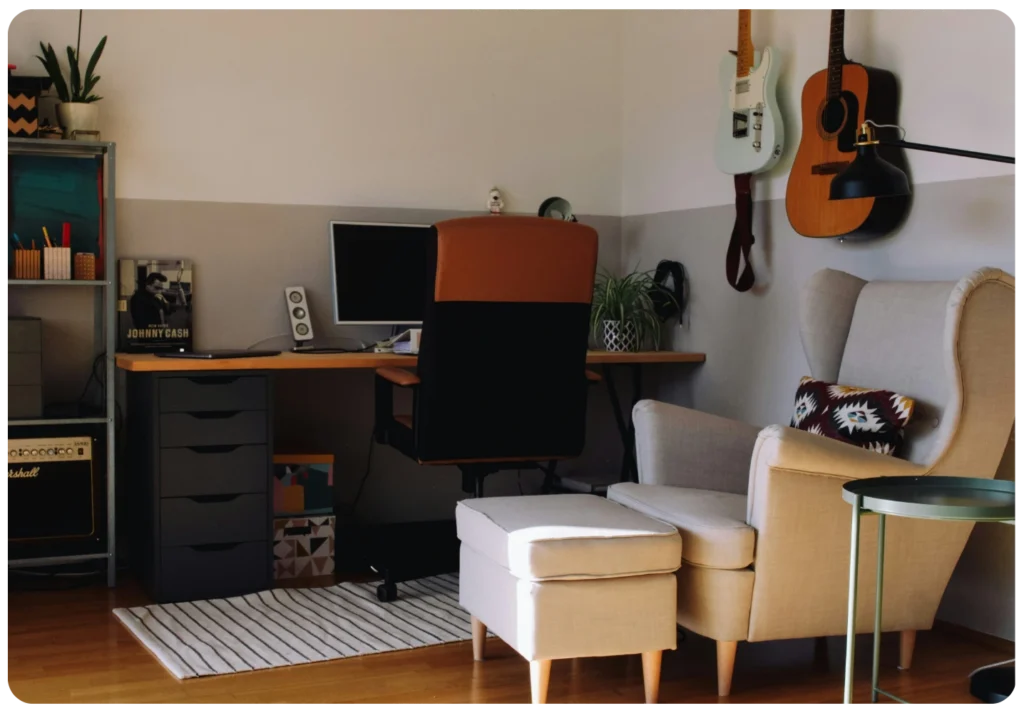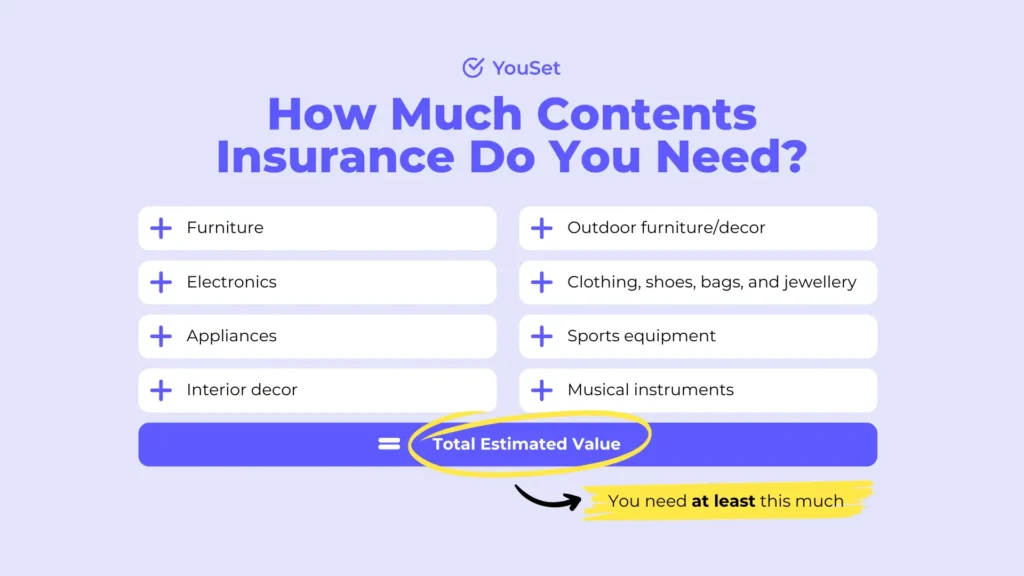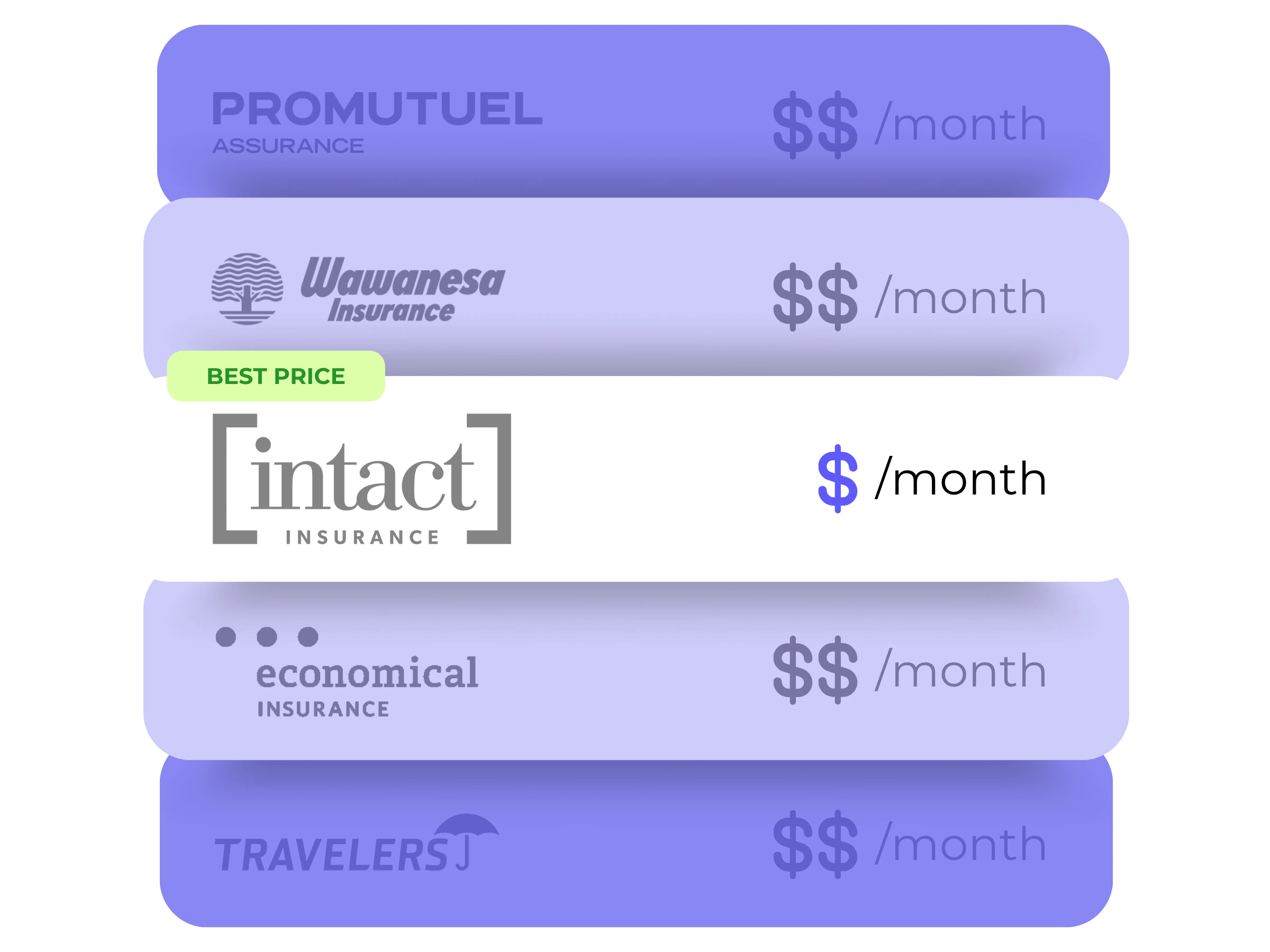Insurance isn’t just meant to protect the physical structure or fixtures of your home. What’s equally important are the things you keep inside it – your personal belongings. That’s why home, condo, and tenant insurance policies in Canada come with a standard type of coverage called contents insurance.
If you’re unfamiliar with contents insurance, this article will be an ideal introduction. In it, you will find the definition of contents insurance, what it covers vs. what it doesn’t, how much your contents insurance coverage limit should be, and more.

What is contents insurance?
Contents insurance, which you may also see referred to as personal belongings coverage, protects your possessions should they get damaged or lost as a result of a covered peril, such as a fire or theft.
Take a moment to think of all the things you own, from your clothing to your appliances, electronics, furniture, and more. If you were to find yourself without contents insurance, you would have to pay to replace or repair every single one of those items out of your own pocket. This often proves to be significantly more expensive than anticipated, surpassing what individuals are financially prepared to handle.
Fortunately, when you buy home insurance, condo insurance, and tenant insurance in Canada, contents insurance is typically included as a standard component.
What contents insurance does and doesn’t cover
Whether you own or rent your home, you likely have thousands, if not tens of thousands, of dollars worth of personal belongings inside of it. That’s why contents insurance typically covers a wide array of the most common personal belongings, including:
- Furniture (ex. couches, mattresses, beds, tables, chairs, rugs, dressers, etc.)
- Electronics (ex. TVs, computers, laptops, tablets, smartphones, game consoles, etc.)
- Appliances (ex. refrigerators, stoves, dishwashers, washing machines, dryers, etc.)
- Clothing, shoes, bags, and jewellery
- Interior decor (ex. artwork, rugs, curtains, mirrors, lamps, etc.)
- Sports equipment (ex. bicycles, golf clubs, tennis rackets, skis, snowboards, etc.)
- Musical instruments (ex. guitars, pianos, violins, drums, etc.)
- Outdoor furniture/decor (ex. patio sets, umbrellas, hammocks, fire pits, etc.)
- Personal belongings in your car (ex. handbags, sunglasses, electronics, sports equipment, car seats, etc.)
- Luggage
Naturally, every insurance policy comes with limitations and exclusions. With contents insurance, here are some of the items and situations it typically does not cover:
- Vehicles
- Cash and valuable papers
- High-value items past your coverage limit (unless you have a floater for the item, in which case the full value of the item would be covered)
- Pets and livestock
- Intentional damage
- Damage or loss due to illegal activities
- Damage or loss due to neglect or lack of maintenance (ex. mold, pests, etc.)
- Damage from certain perils (ex. floods, earthquakes, acts of war, etc.)
- Damage or loss due to normal wear and tear or deterioration
How much contents insurance do you need?
How much contents insurance you need depends on how many belongings you own, their value, and your budget for insurance. So the only way to know how much contents insurance you need is to create an inventory of your belongings and assess their value. You will learn how to do that in the next section.
For reference, though, the base coverage limit for contents insurance at YouSet is $20,000, with the option to increase your coverage limit up to $100,000 if needed. As you might imagine, opting for a higher coverage limit will result in a higher premium, so always consider your budget carefully when selecting your limit.
How to calculate the value of your contents for insurance
Creating a home inventory list and determining the value of your belongings is something every homeowner, condo owner, and renter should do – ideally long before the need for a claim arises. While it might feel like a make-work project right now, you’ll thank yourself later if you end up in a situation that’s already stressful enough without the added burden of scrambling to account for your belongings.
In fact, here’s how to calculate the value of your personal belongings for insurance.
- Create an inventory: Create a list of all your belongings, organize it by room, and store it online. This way you’ll be able to access it from anywhere and on any device, even if your phone or computer gets lost or damaged.
- Assign values: Now, estimate what it would cost to replace each item, taking factors such as age, condition, and market value into consideration. Using receipts, appraisals, or online research will help you assign the most accurate values to each of your belongings.
- Total the values: To get the total estimated values of your belongings, add up the values. A platform like Google Sheets will make this easier thanks to built-in functions for quick calculations.
- Choose a coverage limit: Based on the estimated total value of your belongings, choose a coverage limit that will give you the protection you need without overextending your finances.

Do you need photos for contents insurance?
Having photos for contents insurance is always a good thing, regardless of whether your insurance company explicitly states that you need them or not.
That’s because photographs are tangible evidence. They support your claim, provide visual confirmation, and can even help expedite the claims process. While receipts, home inventory lists, appraisals, warranties, and other documents can also serve as proof of ownership when making a home insurance claim, photographs offer an additional layer of certainty and clarity.
So, if you haven’t already, spend a few minutes taking pictures of all the rooms, closets, storage areas, and outdoor spaces in your home, condo, or rental unit, as well as any recent home improvements or renovations you might have made. Remember to store these photos somewhere safe and easily accessible from any device, such as the cloud, and to set a reminder on your phone to update them every six months to a year.
Next steps
Contents insurance for homeowners, condo owners, and renters is included in the vast majority of home insurance policies in Canada. Of course, how much coverage you get will depend on the quantity and value of your personal belongings, as well as your budget for insurance, given that more coverage typically results in a higher monthly premium.
To ensure you get the best coverage for your home, condo, or rental unit at the cheapest price, try YouSet. Not only is the platform free to use, but it only takes four minutes for our algorithms to compare prices from multiple insurers and present you with the best option. This means you’ll have the peace of mind of knowing you have the coverage you need, without unnecessarily overspending.



